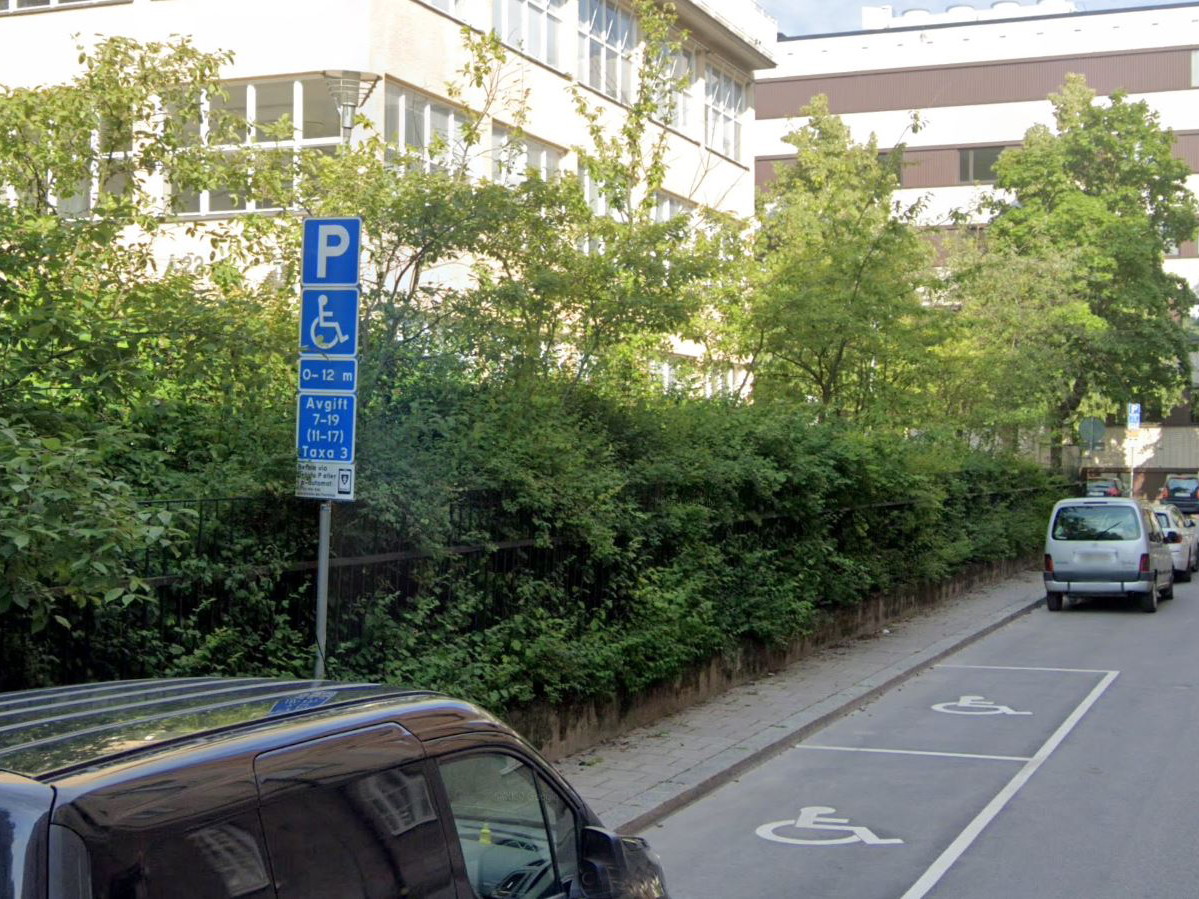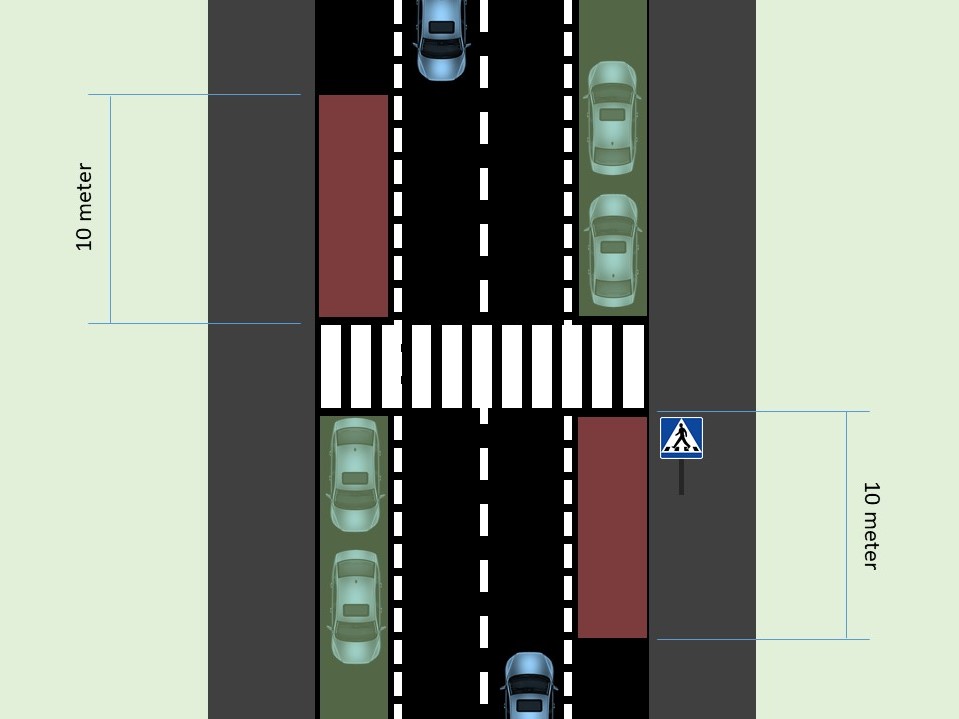Defining what it means to "park"
Parking indicates that your vehicle has parked with or without a driver for any reason that does not include the following
- Avoid a danger.
- A traffic sign
- A traffic situation (eg: accident, road block)
- Loading and unloading
- Dropping off and picking up passengers
Defining what it means to "stop"
Stopping indicates that your vehicle has stopped for any reason that does not include the following
- Avoid a danger.
- A traffic sign
- A traffic situation (eg: accident, road block, pedestrian walking across the street)
- Parking
That means, you are stopping when you
- Stop to talk on your phone
- Stop to look for directions on google maps on your phone
- Stop to ask for directions from a pedestrian
- Stop to drop off passengers
- Stop to load or unload your vehicle
- ...etc
Where can you park?
Understanding where and where not you can park or stop will help you prevent alot of traffic tickets. In sweden traffic inspectors give out tickets for the smallest miss conduct with regards to parking rules. So learn these well
- You can park where the parking sign is displayed. If NO ADDITIONAL SIGN is added you can park there for 24 hours on weekdays. On saterdays, sundays and public holidays there are no time limit
- Additional pannel: An additional pannel will indicate the time limit and other information that will dictate the duration, layout and other information about parking. Examples are below
- You usually need a parking disc or a parking ticket to park. If you have a parking disc you will need to set the time of arrival on the parking disc.
- Parking spaces for disabled drivers: You need a permit to park there. If you do not have a permit you can use this space to drop off or pick up passengers
- You can only park and stop on the right side
- Exception: In a one way street you can park on the left
- Exception: If there is a railway or tramline on the right you can park on the left
- Park as far from the middle of the road as possible
- Parking on a uphill or downhill
- Uphill: Turn the wheels to the left (If the car rolls backward it will not roll into the road)
- Downhill: Turn the wheels to the right (If the car rolls forward it will not roll into the road)
 Parking Sign (E19)
Parking Sign (E19) Additional Pannel Sign (T6)
Additional Pannel Sign (T6)Additional panel (Time limit indication)
 Additional Panel (T6)
Additional Panel (T6)Parking Example:
On a Saturday at 23:00, you park your car on this street. When do you pay the charge?

Assessing the parking board
- On Saturday the charge is valid only until 19:00pm
- You don't need to pay as you parked 23:00pm
- There is no charge on Sundays, so don't need to pay
- On Monday, after 07:00am will you be required to pay
Notes: There is parking for handicap people. but the parking is only allocated 0-12m from the post. Thus all other parking spaces are available to park
No Park Sign
You are not allowed to park where the following road sign is placed or in the follwoing situations
- Where stopping is prohibited, parking is always prohibited
- Where road sign "No Parking (C35)" is displayed
- Within 30 metres of a railway or tramway crossing.
- Where the vehicle is facing the direction of traffic (In opposite direction of the flow of traffic)
- On a priority road (However Exception: If there is a parking sign placed on the priority road you are allowed to park there)
- Blocking another vehicles ability to exit
- Double parking (Where you park next to another vehicle on the road preventing them from driving away). You are allowed to park next to a two wheel vehicle (Motor bike, bicycle)
- Where one of the wheels are outside of a parking bay.
- At a passing place.
- At a yellow broken line.
 No Parking (C35)
No Parking (C35)No parking and stopping sign
You are not allowed to park or stop where the following road sign is placed, or in the following situations
- On or 10 metres before pedestrian crossing, foot path, bicycle passage, bicycle crossing or bicycle path (You are allowed to park directly after these crossings. Reason being you do not obstruct the view).
- Within 10 metres of a junction
- Where you obstruct the view or a road sign.
- In a tunnel
- On a road with a solid line and the distance between you and the solid line is less then 3 meters
- In a roundabout.
- In a public transport lane.
- By a yellow solid line.
- In a prohibited zone.
- At a intersection of a railway or tramway
- At a dual track for pedestrians, cyclists and moped drivers
- On a motorway or clearway.

No stopping or parking 10 meters infront of pedestrian crossing

- You cant park 10 meters before a pedestrian crossing
- You are permitted to park directly after it
Example 1:

- Driver cant see the pedestrian in time
- Driver cant break ahead off time to reduce injury
Example 2:

- Driver can see the pedestrian in time
- Driver can break ahead off time to reduce injury, as there is enough margin to do so
No stopping or parking 10 meters within a intersection
Example 1:

- Driver cant see the parked car behind the obstruction
- Driver can drive into the back off the parked car
No parking zone sign
You are not allowed to park within the area
- Not allowed to park in the zone
- If a parking sign is placed somewhere in the zone you are permitted to park there

No parking on ODD NUMBER dates sign
You are not allowed to park here on odd number dates
- Example odd dates: 3rd,5th,7th,15th,19th, etc
 Vehicle parking is prohibited on odd-numbered dates (C36)
Vehicle parking is prohibited on odd-numbered dates (C36)No parking on EVEN NUMBER dates sign
You are not allowed to park here on even number dates
- Example odd dates: 2nd, 4th, 8th, 16th, 22nd, etc
 Vehicle parking is prohibited on even-numbered dates (C37)
Vehicle parking is prohibited on even-numbered dates (C37)No parking even/odd dates depending on which side of the road you are on
You are not allowed to park here on even number dates
- The sign indicates that it is prohibited to park vehicles on days with even-numbered dates on the side of the road that has even-numbered addresses
- The sign indicates that it is prohibited to park on days with odd-numbered dates on the side of the road that has odd-numbered addresses.
 Date parking (C38)
Date parking (C38)Bus stops, Are you allowed to stop or park?
- You can drop off or pick up passengers at any time (You may not hinder public transport bus or tram from normal routine pickups)
Can you pick up someone before or after a bus stop in the case that it might effect a transport bus normal routine? Yes you can pick up someone 20 metres before and 5 metres after a bus stop. Reason for this distances is that the bus needs more room to pull in
When will you get a ticket or risk your car being towed?
- If you parked in a disabled parking spot without a permit
- If you parked in a public transport lane, dual track for pedestrians and cyclists
- If you parked too close to an intersection
- If you parked too close to a rail track
- If you parked too close to a pedestrain crossing
- If you parked in an exit of private property, thats not yours
- If you parked at the exit for a emergency vehicle
- If you parked where it prevent road maintenance from moving
- If you have received a driving ban or is not safe.
- If your car is a wreck
- If your car have been parked for more the 7 days and looks abandonend (Does not count if you have a permit to park there or if its in a parking area)